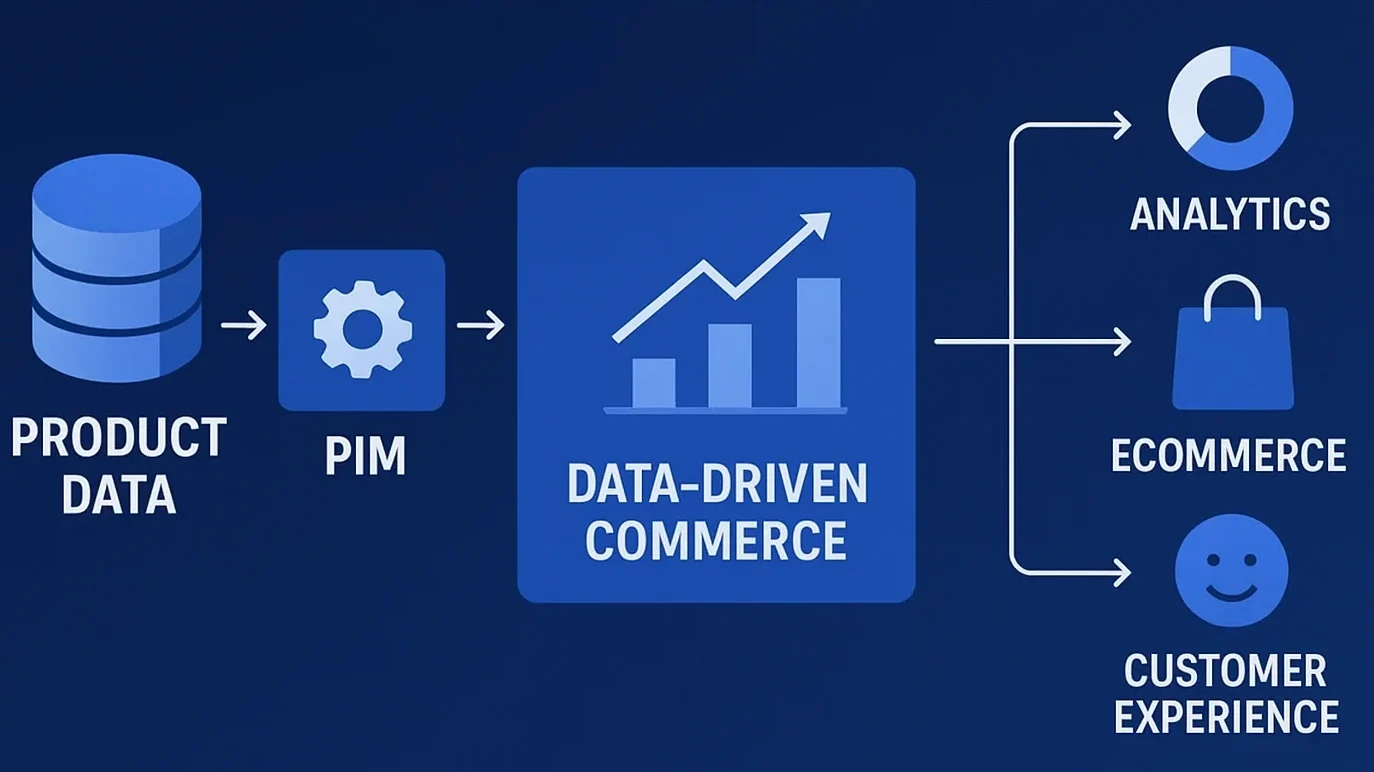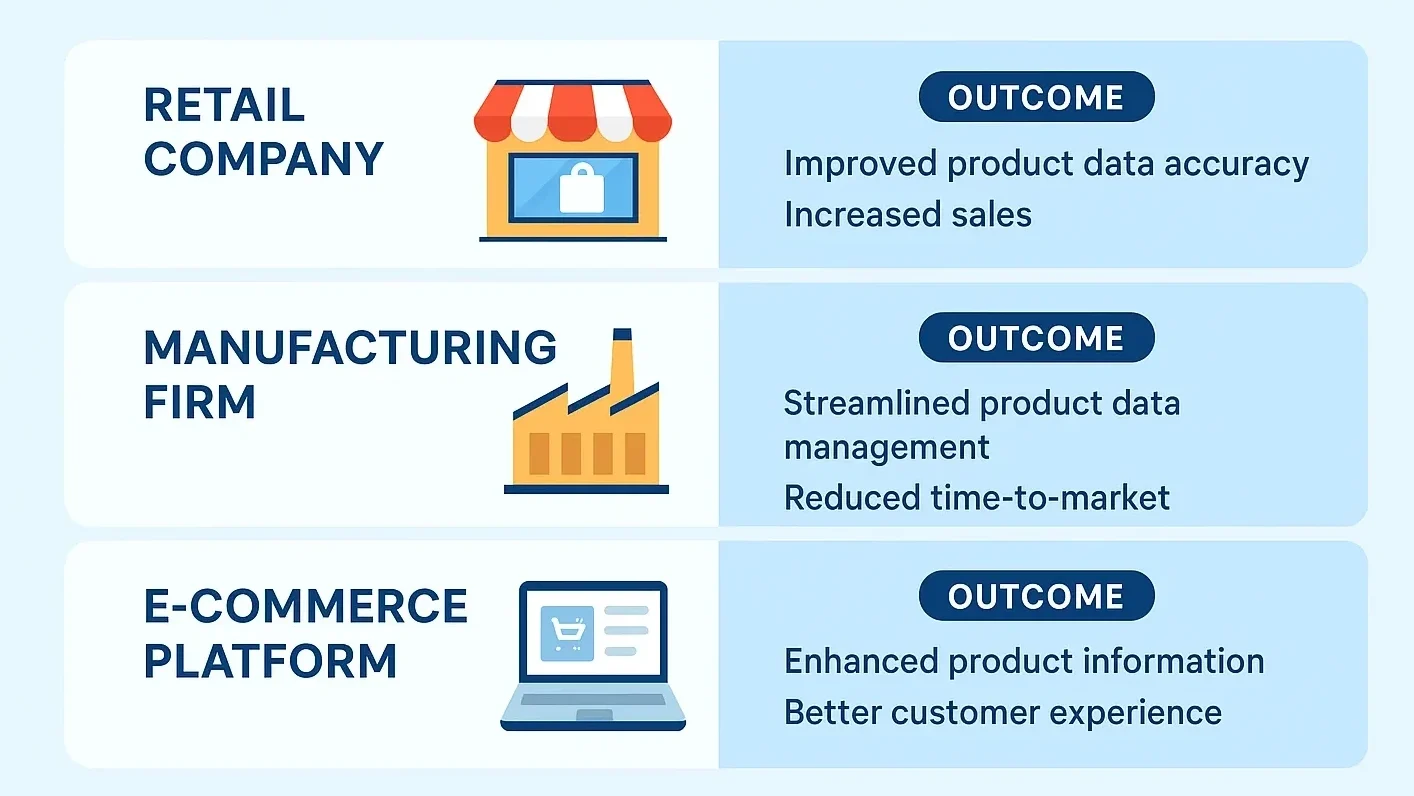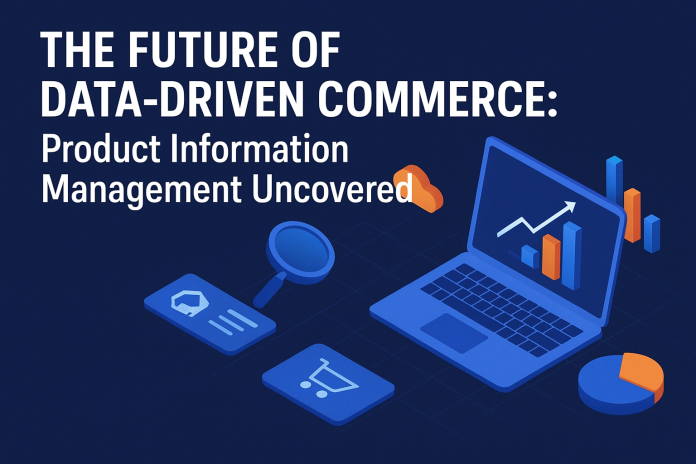In today’s fast-changing digital economy, data-driven commerce is no longer optional; it has become essential. Businesses of all sizes face increasing pressure to manage expanding product catalogs while meeting rising consumer expectations. Traditional product management approaches, such as spreadsheets, emails, and siloed systems, struggle to keep pace with these demands.
Product Information Management (PIM) systems address this challenge by centralizing and harmonizing product data across channels, marketplaces, and marketing platforms. This article examines how PIM facilitates data-driven strategies, its significance for modern commerce, and its potential role in shaping future retail and e-commerce practices.
Key Takeaways
- Data-driven commerce requires efficient Product Information Management (PIM) to manage product data across various channels.
- PIM centralizes product information, ensuring consistency, improving customer trust, and enabling faster updates across platforms.
- Next-generation PIM systems include features such as digital asset management, analytics dashboards, and AI automation for enhanced performance.
- Adopting PIM strengthens marketing efforts, reduces errors, and prepares businesses for future technologies, such as AR and AI-driven shopping.
- Planning a PIM system involves auditing data, setting clear goals, and ensuring close collaboration with vendors for successful implementation.
Table of Contents
- 1. Why Data-Driven Commerce Needs Strong PIM
- 2. What Is Product Information Management (PIM)?
- 3. How PIM Drives Future-Oriented Commerce Strategies
- 4. Key Features of Next-Gen PIM Systems
- 5. Advantages of Adopting PIM
- 6. Real-World Applications: PIM in Action
- 7. Planning Your PIM-Enabled Future
- 8. Looking Ahead: Where Commerce and PIM Are Headed
- Conclusion
1. Why Data-Driven Commerce Needs Strong PIM
CConsumer behaviors are increasingly dynamic. Shoppers browse on mobile devices, compare prices across platforms, and expect consistent product details at every touchpoint. In this environment, reliable product information becomes the foundation of trust and conversion.
PIM plays a crucial role in delivering omnichannel consistency by ensuring the exact product details appear across websites, marketplaces, and ads. It also supports personalization by enriching data with attributes such as sustainability, material type, or regional availability, which feeds AI-driven recommendation engines. Finally, structured data within PIM enables the execution of predictive analytics and automated insights, allowing companies to adapt quickly to changing demand.
Without PIM, businesses risk disjointed customer experiences and inefficiencies. With it, they can synchronize data seamlessly and respond in real time.

2. What Is Product Information Management (PIM)?
A PIM system serves as a central hub for all product-related content descriptions, specifications, digital assets, compliance details, and pricing. Instead of relying on scattered spreadsheets and disconnected tools, PIM creates a single, authoritative source of truth.
Modern platforms often include digital asset management for images and videos, version control with approval processes, and automated syndication to e-commerce sites, marketplaces, and marketing channels. This centralization enhances data integrity, accelerates workflows, and ensures consistent customer-facing experiences.
3. How PIM Drives Future-Oriented Commerce Strategies
PIM goes beyond centralization; it enables agility and growth. Retailers can update catalogs instantly across multiple channels, adapt campaigns to enriched product attributes, and leverage AI tools for auto-tagging, copy generation, or intelligent recommendations. By connecting product information with performance metrics, businesses also gain a deeper understanding of what drives conversions.
4. Key Features of Next-Gen PIM Systems
Not all PIM systems offer the same capabilities. For businesses building toward a more data-driven future, practical features include:
- Omnichannel distribution across storefronts, mobile apps, and marketplaces.
- Digital asset management (DAM) for organizing multimedia product content.
- Workflow and collaboration tools with versioning and approvals.
- Attribute-level data modeling to adapt product information by category.
- Scalability and integrations with ERP, CRM, and e-commerce platforms.
- AI and automation for tagging, translation, and content generation.
- Analytics dashboards for tracking data completeness and performance.
If you’re researching solutions that offer these powerful, futuristic capabilities, exploring a modern PIM software platform could put your team on the leading edge of e-commerce operations.

5. Advantages of Adopting PIM
- Consistency across channels strengthens credibility and improves customer trust.
- Faster product launches by managing updates from one centralized location.
- More brilliant marketing campaigns powered by richer metadata.
- Reduced errors and returns thanks to more accurate product details.
- Future readiness for technologies such as AR, voice shopping, and AI search.
6. Real-World Applications: PIM in Action

Consider a smart home retailer launching new gadgets. With PIM, product specs, multilingual descriptions, and lifestyle images are structured in one place. When a flash sale begins, updated pricing and descriptions appear simultaneously on their website, app, and Amazon store, while ads leverage technical specs to target specific audiences.
An ethical apparel brand demonstrates another application. By enriching product information with sustainability tags, factory origin details, and care instructions, the company not only improves SEO visibility but also builds customer loyalty through transparency.
A large electronics marketplace shows PIM’s scalability. Bulk vendor imports with inconsistent naming and missing specs are automatically normalized, categorized, and flagged for gaps. Analytics reveal which missing details most impact conversions, allowing the business to prioritize cleanup for maximum results.
7. Planning Your PIM-Enabled Future
Successful adoption begins with a careful roadmap. Businesses should first audit their existing product data landscape and identify fragmented sources. Next, they need to establish clear goals, whether faster time-to-market, improved personalization, or reduced return rates. A pilot rollout with a limited product category helps refine processes before full deployment.
Working closely with vendors is critical; partners should understand not only storage but also AI, analytics, and omnichannel requirements. Introducing automation early enables scalable workflows, while ongoing monitoring of metrics, such as content completeness, error rates, and conversion uplift, ensures continuous improvement.
8. Looking Ahead: Where Commerce and PIM Are Headed
Emerging trends will keep pushing PIM to the center of commerce innovation. Voice-first shopping requires structured metadata to deliver accurate results. Augmented reality shopping relies on PIM systems that can manage 3D files and spatial tags. AI-driven content creation will soon generate high-quality product descriptions and multilingual variants at scale. Meanwhile, advanced personalization will rely on fine-grained product attributes, and growing demand for ethical transparency will push PIM to handle certifications, material origins, and sustainability data.
Conclusion
Data-driven commerce thrives on clean, reliable, and accessible product information. Effective information management ensures that this data remains accurate and actionable across all channels. PIM provides the centralized foundation needed to achieve this, supporting consistency, personalization, and readiness for emerging technologies. While adoption requires planning and integration, the long-term payoff is significant: seamless, trustworthy, and future-ready customer experiences.











